
Jules Sébastien César Dumont d'Urville was a French explorer and naval officer who explored the south and western Pacific, Australia, New Zealand, and Antarctica. As a botanist and cartographer, he gave his name to several seaweeds, plants and shrubs, and places such as d'Urville Island in New Zealand.

Jean Baptiste Alphonse Déchauffour de Boisduval was a French lepidopterist, botanist, and physician.

René Primevère Lesson was a French surgeon, naturalist, ornithologist, and herpetologist.
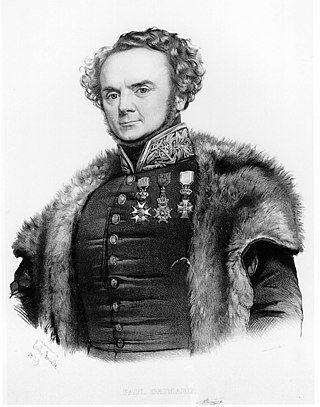
Joseph Paul Gaimard was a French naval surgeon and naturalist.

Jean René Constant Quoy was a French naval surgeon, zoologist and anatomist.
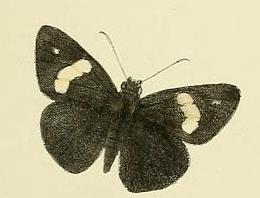
Notocrypta feisthamelii, the spotted demon, is an Indomalayan butterfly belonging to the family Hesperiidae. The name honours the French entomologist Joachim François Philibert Feisthamel.

The hooded monarch is a species of bird in the family Monarchidae. It is found on New Guinea. Its natural habitat is subtropical or tropical moist lowland forests.

Oxyperas elongatum is a species of large bivalve mollusc in the family Mactridae.
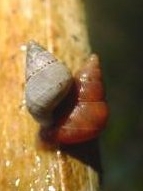
Omphalotropis rubens is a species of minute, salt marsh snail with an operculum, aquatic gastropod mollusk, or micromollusk, a terrestrial gastropod mollusk in the family Assimineidae.
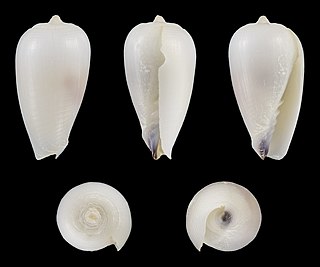
Imbricariopsis conovula is a species of sea snail, a marine gastropod mollusk in the family Mitridae, the miters or miter snails.

Fuegotrophon pallidus is a species of sea snail, a marine gastropod mollusc in the family Muricidae, the murex snails or rock snails.

Coralliophilla monodonta is a species of sea snail, a marine gastropod mollusk in the family Muricidae, the murex snails or rock snails.
Teanu is the main language spoken on the island of Vanikoro, in the easternmost province of the Solomon Islands.
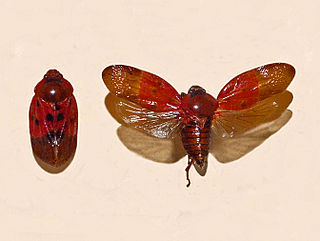
Leptataspis discolor is a species of froghoppers belonging to the family Cercopidae.

Pierre Adolphe Lesson (1805–1888), also as Pierre-Adolphe Lesson, was a French botanist. The standard author abbreviation A.Lesson is used to indicate this person as the author when citing a botanical name.

Delias gabia is a butterfly in the family Pieridae. It was described by Jean Baptiste Boisduval in 1832. It is endemic to New Guinea.
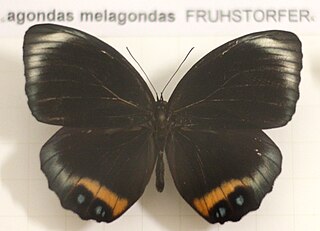
Elymnias agondas, the palmfly, is a butterfly in the family Nymphalidae. It was described by Jean Baptiste Boisduval in 1832. It is endemic to New Guinea and neighbouring Cape York in the Australasian realm.

Elymnias ceryx is a butterfly in the family Nymphalidae. It was described by Jean Baptiste Boisduval in 1836. It is found in the Indomalayan realm.

Lamprolina aeneipennis is an Australian beetle species in the family of leaf beetles (Chrysomelidae), which is found in eastern Australia, in Queensland, New South Wales and Victoria, but in New South Wales only. It was first described in 1835 by Boisduval as Phyllocharis aeneipennis.

Dicranolaius bellulus is a species of soft-winged flower beetle in the family Melyridae, found in Australia, in all mainland states and territories. It was first (partially) described in 1830 by Félix Édouard Guérin-Méneville as Malachius bellulus with the publication of illustrations. However, Guérin-Méneville completed the description with the publication of a text in 1838. Consequently, the Australian Faunal Directory considers the first valid publication to be that of Jean Baptiste Boisduval in 1835. Taxonomic reasons for the various synonyms are given in a 2017 paper by Liu, Slipinski and Pang.


















